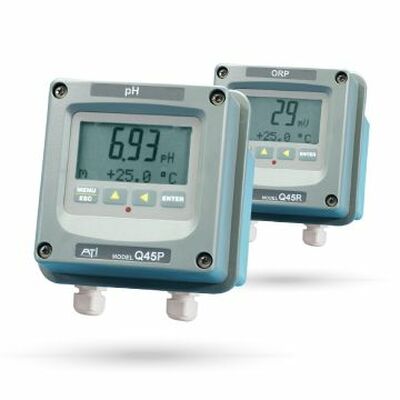What is Oxidation Reduction Potential (ORP)
ORP is a term used frequently in the water treatment and food processing industries. ORP stands for "Oxidation Reduction Potential." What does that mean? A good working definition is that "ORP is a measure of the cleanliness of the water and its ability to break down contaminants." ORP has a range of -2,000 to +2,000, and units are in "mV" (millivolts.) Since ozone is an oxidizer, we are only concerned with positive ORP levels (above 0 mV.)
ORP sensors work by measuring the dissolved oxygen. More contaminants in the water result in less dissolved oxygen because the organics are consuming the oxygen and therefore lower the ORP level. The higher the ORP level, the more ability the water has to destroy foreign contaminants such as microbes or carbon based contaminants. The chart below identifies ORP levels for various applications.
| ORP Level (mV) | Application |
|---|---|
| 0-150 | No practical use |
| 150-250 | Aquaculture |
| 250-350 | Cooling Towers |
| 400-475 | Swimming Pools |
| 450-600 | Hot Tubs |
| 600 | Water Disinfection* |
| 800 | Water Sterilization |
ORP level can also be viewed as the level of bacterial activity of the water because a direct link occurs between ORP level and Coliform count in water. The chart below lists ORP levels and relative Coliform counts.
| ORP Level (mV) | Coliform Count in 100mL of Water |
|---|---|
| 200 | 300 |
| 300 | 36 |
| 400 | 3 |
| 600 | 0 |
ORP Disadvantages
ORP cannot be used as a direct indicator of dissolved ozone, except in very clean water applications.
ORP Advantages
ORP is a convenient measure of ozone's ability to perform a chemical task. ORP is valid over a wide pH range and ORP probes are rugged enough to be placed into processes for in-line measurement. The probes can withstand process pressures in excess of 30 psi.
ORP and Ozone
While ORP can be used as a direct indicator of dissolved ozone in clean water, even moderate turbidity (cloudiness) results in ORP values that are much lower than what would be expected for the actual amount of dissolved ozone. In other words, ORP is unreliable for measuring ozone levels in dirty water. Ozone detection kits are available and will be accurate at the levels of recommended ozone concentration for most applications.
How does an ORP meter work?
An ORP probe works by creating a small voltaic cell (battery) between the fluid it contains and the solution it is immersed in. The measured voltage is then converted into pH or oxidation/reduction potential. Modern proves have the following components:
- The body of the electrode, typically made from non-conductive glass or impact resistant plastics.
- The reference electrode, usually comprised from the same metals as the main electrode.
- The junction zone between the studied solution and the reference solution, usually made from ceramics or a capillary with asbestos or quartz fiber.
- The reference solution, usually 0.1 mol/L KCI.
- The internal electrode, usually made of silver chloride or calomel (Mercury(l) chloride)
- The internal reference solution, neutral buffered solution of 0.1 mol/L KCI
- The sensing part of the electrode, a bulb made from a special type of glass
- When using a silver chloride electrode, a small amount of AgCI can precipitate inside the glass bulb.
An ORP meter measures very small voltages generated with a probe placed in ozonated water. The electrode is made of platinum or gold, which reversibly loses its electrons to the oxidizer. A voltage is generated which is compared to a silver (reference) electrode in a silver salt solution, similar to a pH probe. The more oxidizer available, the greater the voltage difference between the solutions.

